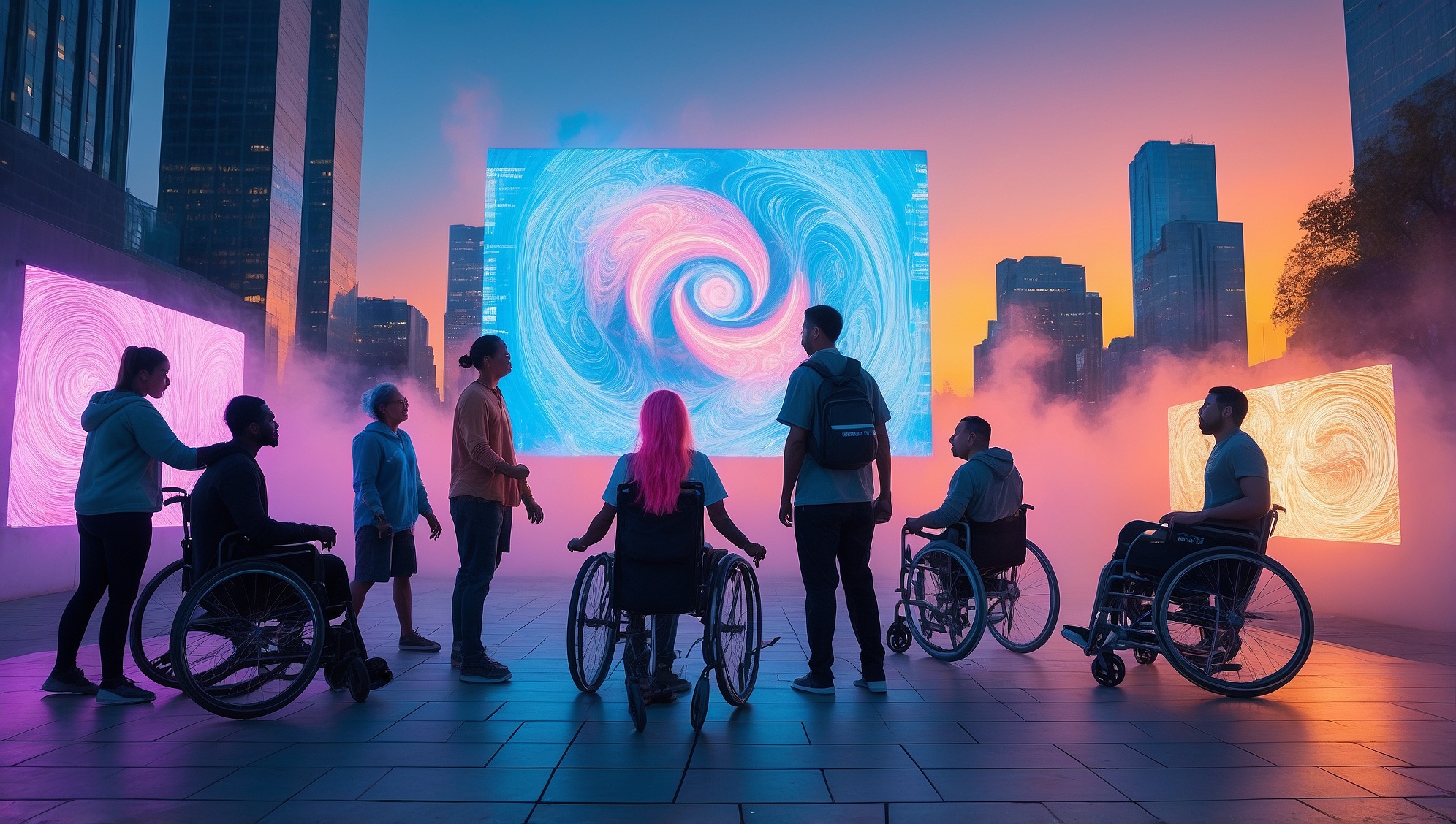Interactive public art bridges the gap between technology and tangible environments. By merging digital tools with physical settings, it transforms static displays into dynamic experiences, encouraging engagement and community interaction.
What Defines Interactive Public Art?
Interactive public art is a dynamic form of public art that integrates audience participation as a fundamental element. Unlike traditional installations, it often incorporates technology such as sensors, projections, augmented reality, and soundscapes, inviting people to interact rather than merely observe.
The Impact of Interactive Public Art
Interactive installations serve multiple purposes:
- Community Engagement: Encourages participation and fosters a sense of connection among individuals.
- Urban Enhancement: Adds vibrancy and innovation to public spaces, making them more inviting.
- Storytelling: Provides a platform to narrate cultural, historical, or social narratives through immersive experiences.
- Inspiration and Creativity: Stimulates thought, creativity, and awareness through innovative formats.
Techniques That Combine Digital and Physical Elements
Digital artists often utilize formats like SVG to create scalable designs for projection mapping or augmented reality, ensuring crisp visuals across varying sizes and resolutions.
- Projection Mapping
- Transforms static surfaces like buildings into animated canvases.
- Allows artists to layer visuals and narratives onto existing structures.
- Examples include festivals or landmark celebrations with light shows that respond to audience movement.
- Augmented Reality (AR)
- Adds virtual layers to physical surroundings via smartphones or AR glasses.
- Enables interactive storytelling, with elements like 3D models or audio guides that activate in specific locations.
- Kinetic Sculptures
- Combines movement with digital inputs such as wind sensors, human touch, or sound triggers.
- Creates sculptures that adapt based on environmental or user interactions.
- Soundscapes
- Utilizes sensors or microphones to generate sound based on real-time inputs.
- Allows spaces to “respond” audibly to visitor presence or actions.
Examples of Interactive Public Art
Interactive installations are often featured prominently at arts festivals, offering visitors an opportunity to engage with cutting-edge public art that merges creativity with technology.
- Rain Room by Random International: Visitors walk through simulated rain, which stops wherever they step, blending physical immersion with real-time sensor technology.
- The Bay Lights in San Francisco: A light installation on the Bay Bridge that adapts to environmental factors, creating a constantly evolving display.
- Superblue’s Pulse Topology: Interactive light and sound installations that respond to visitors’ heartbeats, turning biological data into art.
- AR Murals: Traditional murals enhanced with AR features, allowing users to view animations or deeper narratives via apps.
Benefits of Merging Digital and Physical Art Spaces
- Accessibility: Makes art more approachable by integrating it into public spaces and blending familiar digital tools.
- Dynamic Interaction: Allows for individualized and real-time engagement, creating unique experiences for each participant.
- Sustainability: Many installations use renewable energy sources or adaptive designs to reduce their environmental impact.
- Cultural Preservation: Combines modern techniques with historical elements to preserve and reinterpret local heritage.
Challenges in Interactive Public Art
- Technological Limitations: Ensuring hardware reliability and software scalability in public environments.
- Maintenance: Regular upkeep to address wear and technological issues.
- Inclusivity: Designing experiences accessible to people of all ages and abilities.
- Budget Constraints: Balancing artistic vision with the financial resources required for technology and infrastructure.
Emerging Trends in Interactive Public Art
- AI Integration
- Use of AI to create responsive and adaptive installations.
- Examples include generative art that changes based on user input or environmental data.
- Wearable Technology
- Expanding interaction through devices like smart wristbands that link personal data with public installations.
- Enables a more personalized and immersive experience.
- Mixed Reality Spaces
- Combines virtual reality (VR), AR, and physical environments to build fully immersive experiences.
- Creates hybrid spaces where users can influence both the real and virtual worlds.
- Environmental Integration
- Art that adapts to natural phenomena, such as solar-powered displays or wind-reactive installations.
- Merges art with ecological awareness, fostering a connection with nature.
How Communities Can Embrace Interactive Public Art
- Partnerships: Collaborate with tech companies, artists, and local governments to fund and implement installations.
- Workshops and Events: Host activities that educate the public on how to interact with these installations.
- Promotion: Use social media and digital platforms to share interactive art experiences, encouraging wider participation.
- Feedback Loops: Include community input in the design process to ensure relevance and inclusivity.
Future Potential of Interactive Public Art
As technology continues to advance, the possibilities for interactive public art will expand. The blending of AI, augmented reality, and sustainable practices can lead to installations that are more immersive, inclusive, and environmentally conscious. By continually adapting to new tools and creative approaches, public art has the potential to transform shared spaces into hubs of interaction, learning, and innovation.
